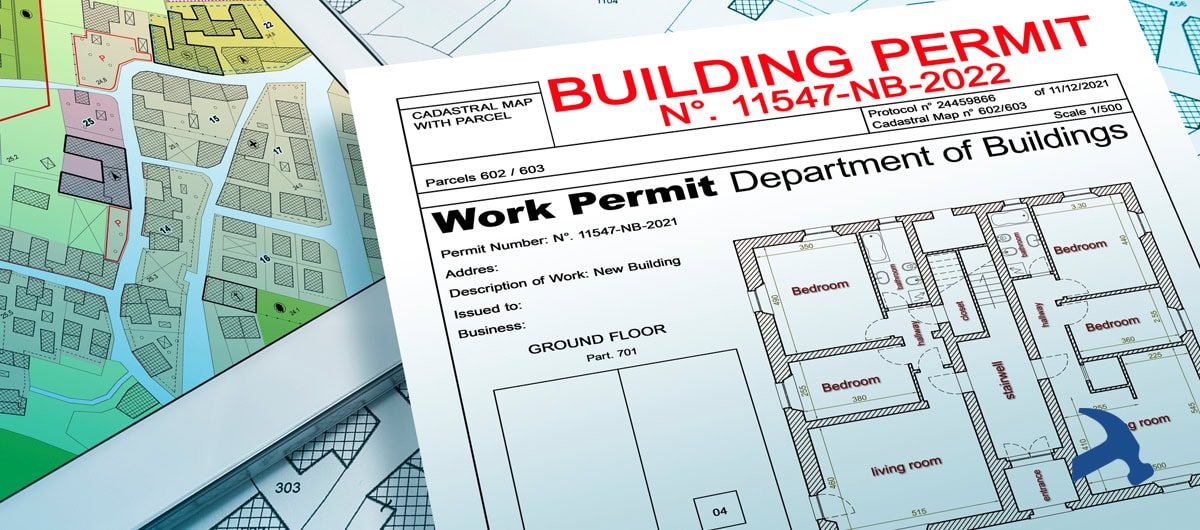
Pulling Building Permits: What Property Owners Need to Know
Don't let the words “building permit” make you break into a cold sweat! While navigating the permit process might seem as complex as solving a Rubik's cube blindfolded, we're here to demystify it. Let's turn this seemingly daunting task into a manageable journey.
Why Permits Aren't Just Red Tape
Think of building permits as your project's insurance policy and safety net rolled into one. They're not just another bureaucratic hoop to jump through – they're your guarantee that your construction project won't come back to haunt you later. When insurance companies or future buyers come knocking, you'll be glad you did things by the book.
Many property owners learn this lesson the hard way. Unpermitted work can lead to denied insurance claims, forced demolition of completed work (ouch!), and headaches that no aspirin can cure. Trust us – we've seen enough “creative” DIY solutions to write a book about what not to do.
Your Permit Checklist: What You'll Need
Before you dive in, gather these essentials:
- Construction plans (the more detailed, the better)
- Site plans (where everything sits on your property)
- Contractor credentials (if you're working with pros)
- Engineering calculations (for anything structural)
- Impact assessments (when mother nature needs consideration)
- HOA blessing (if required – yes, they need to know)
When Do You Need One?
Commercial Projects
You probably need a permit if you're modifying anything in a commercial space. This includes:
- Changing up your space layout
- Tweaking building systems
- Updating accessibility features
- Installing new signage
- Modifying parking areas
Residential & Multifamily Projects
For homes and apartment buildings, you'll need permits for:
- Kitchen or bathroom makeovers
- Adding or removing walls
- New windows or doors
- Deck construction
- Electrical updates
- Plumbing changes
- Structural modifications
- Major exterior changes
- Solar panel installations
- Foundation work
- Roof replacement
Types of Permits: Pick Your Path
Quick-and-Easy Permits
Some projects qualify for same-day permits. These are like the express lane at the grocery store – perfect for simple swaps and minor updates.
Standard Permits
The most common type requires plan review and inspections. It's like the regular checkout line—it takes longer but handles most projects.
Special Situation Permits
Some projects need extra attention due to historic preservation, environmental concerns, or complex requirements. Consider this the custom order counter – more detailed but worth the effort.
The Journey to Permit Success
1. Do Your Homework
- Check local requirements
- Get your timing right
- Budget for fees
- Talk to the experts when needed
2. Get Your Ducks in a Row
- Draw up those plans
- Collect your documents
- Plan your budget
- Map out your timeline
3. Submit & Review
- File your application
- Pay those fees
- Work through the review process
- Address any concerns promptly
4. During Construction
- Keep that permit visible
- Schedule inspections on time
- Document everything
- Stay in touch with inspectors
5. Wrapping It Up
- Get final approvals
- Keep your records
- Celebrate your success!
Avoid These Common Mistakes
Don't let these typical pitfalls trip you up:
- Incomplete paperwork (the #1 delay creator)
- Unrealistic timelines (Rome wasn't built in a day)
- Surprise budget items (permit fees add up)
- Jumping the gun (no work before approval!)
- Missing inspection windows (scheduling is key)
Property-Specific Pro Tips
Commercial Properties
Remember to consider:
- Zoning rules
- Accessibility requirements
- Fire safety standards
- Environmental impacts
- Health department rules
- Parking requirements
Multifamily Buildings
Keep in mind:
- Tenant notifications
- Common area rules
- Fair housing compliance
- Emergency access
- Utility requirements
Single-Family Homes
Think about:
- Neighborhood guidelines
- Impact on neighbors
- Future home value
- Energy requirements
Both a building permit and a Certificate of Appropriateness are required for any work in a Historic District.
Navigating Special Requirements: Historic Districts & Building Officials
Building officials are your allies, not your adversaries. They help ensure your project's success and safety. Clear communication and mutual respect can smooth the permit process.
When working in historic districts, you'll need an extra layer of approval. This applies whether you're updating a Victorian home, modifying an apartment building, or renovating a commercial space.
Local historic preservation commissions review exterior modifications according to the Secretary of the Interior's Standards. The level of scrutiny varies by project scope, from window replacements to full façade changes. Building officials can help coordinate these requirements with preservation boards, making your project run smoothly while maintaining architectural integrity.
Why Choose Rockaway
Our team knows the ins and outs of local building departments like the back of our hand. We've handled everything from simple home upgrades to complex commercial developments, ensuring each project moves smoothly through the permit process.
Ready to Get Started?
Don't let permit requirements stand between you and your dream project. Whether planning a simple upgrade or a major renovation, proper permits protect your investment and ensure your project's success.
Call us at (650) 738-9920 for a quote, or visit our contact page to schedule a consultation. As trusted advisors and expert craftsmen, we're here to help you navigate the permitting process and deliver on our promises.
Sheena Fitzpatrick Principal, Rockaway Construction
Sheena and the Rockaway Construction team specialize in building, renovating, and maintaining commercial, residential, and multifamily properties throughout the Bay Area. With years of experience in construction and project management, she’s passionate about helping property owners and managers keep their buildings safe, modern, and marketable.
She knows that great construction isn’t just about the work—it’s about delivering on promises, solving problems before they escalate, and making life easier for her clients.
You can find Sheena on LinkedIn and right here on the blog, where she shares insights on construction, maintenance, and smart property management.
